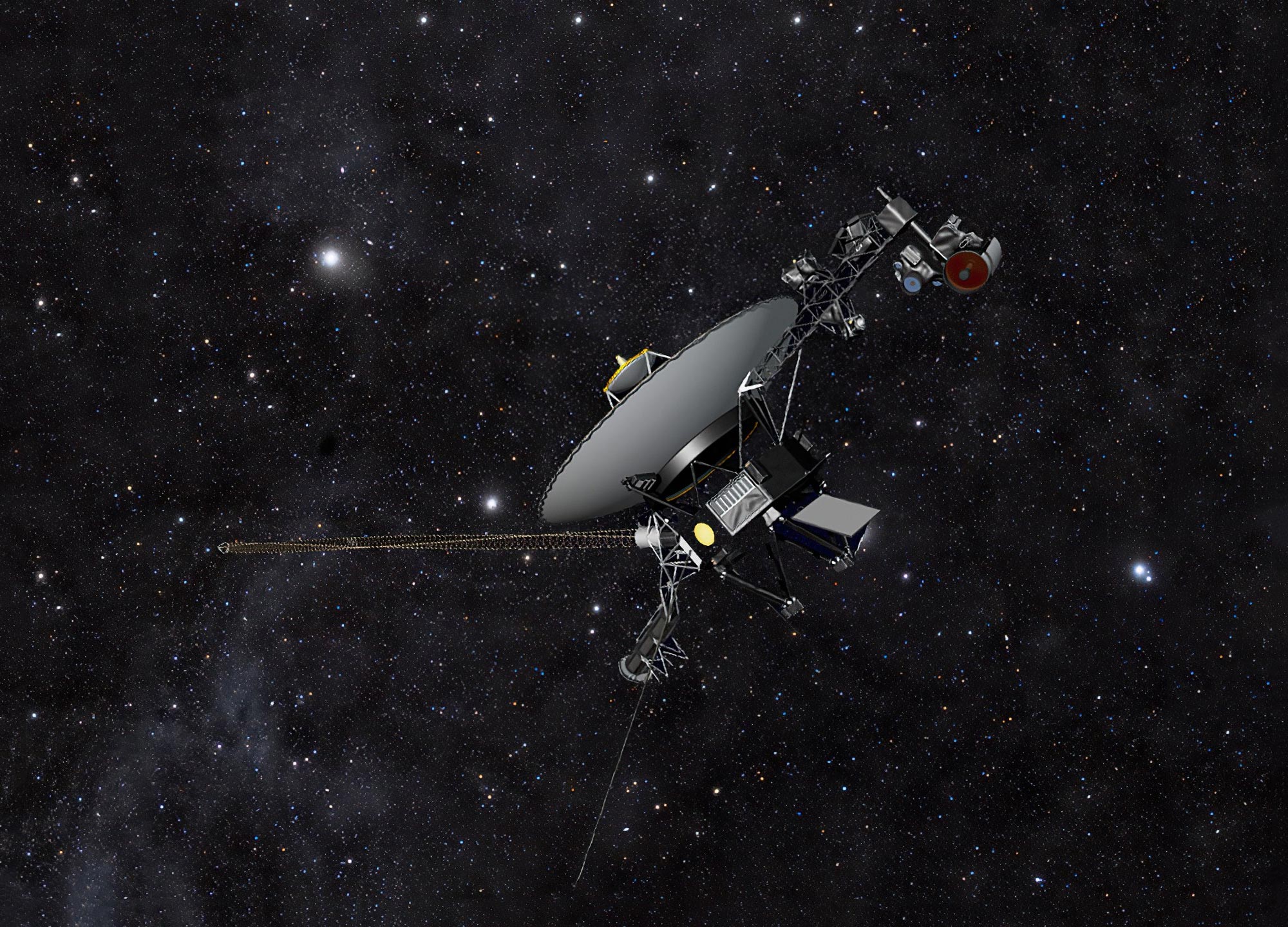

El concepto de este artista muestra la nave espacial Voyager de la NASA contra un campo de estrellas en la oscuridad del espacio. Las dos naves espaciales Voyager se alejan cada vez más de la Tierra, en un viaje al espacio interestelar, y eventualmente orbitarán el centro de la Vía Láctea. Crédito: NASA/JPL-Caltech
El plan mantendrá en funcionamiento los instrumentos científicos de la Voyager 2 durante algunos años más de lo esperado, lo que permitirá más descubrimientos del espacio interestelar.
Lanzada en 1977, la nave espacial Voyager 2 está a más de 20 000 millones de kilómetros de la Tierra y utiliza cinco instrumentos científicos para estudiar el espacio interestelar. Para ayudar a mantener estos instrumentos en funcionamiento a pesar de la disminución de los suministros de energía, la nave espacial envejecida comenzó a usar una pequeña reserva de energía de respaldo reservada como parte de un mecanismo de seguridad a bordo. La medida permitiría a la misión retrasar el cierre de un instrumento científico hasta 2026, en lugar de este año.
Apagar un instrumento científico no terminará el trabajo. Después de apagar un instrumento en 2026, la sonda continuará alimentando cuatro instrumentos científicos hasta que un suministro de energía bajo requiera el apagado de otro. Si la Voyager 2 se mantiene saludable, el equipo de ingeniería espera que la misión continúe en los próximos años.

El modelo de prueba de la Voyager, exhibido en la sala de simulación espacial del JPL en 1976, era una réplica exacta de las sondas espaciales gemelas Voyager lanzadas en 1977. La plataforma de inspección del modelo se extiende hacia la derecha y contiene varios de los instrumentos científicos de la nave espacial al publicarlo. . posiciones. Crédito: NASA/JPL-Caltech
La Voyager 2 y su gemela, la Voyager 1, son las dos únicas naves espaciales que operan fuera de la heliosfera, la burbuja protectora de partículas y campos magnéticos generados por el sol. Las sondas ayudan a los científicos a responder preguntas sobre la forma y el papel de la heliosfera en la protección de la Tierra contra partículas energéticas y otras radiaciones en el entorno interestelar.
dijo Linda Spilker, científica del proyecto Voyager[{” attribute=””>NASA’s Jet Propulsion Laboratory in Southern California, which manages the mission for NASA.
Power to the Probes
Both Voyager probes power themselves with radioisotope thermoelectric generators (RTGs), which convert heat from decaying plutonium into electricity. The continual decay process means the generator produces slightly less power each year. So far, the declining power supply hasn’t impacted the mission’s science output, but to compensate for the loss, engineers have turned off heaters and other systems that are not essential to keeping the spacecraft flying.
With those options now exhausted on Voyager 2, one of the spacecraft’s five science instruments was next on their list. (Voyager 1 is operating one less science instrument than its twin because an instrument failed early in the mission. As a result, the decision about whether to turn off an instrument on Voyager 1 won’t come until sometime next year.)

Each of NASA’s Voyager probes are equipped with three radioisotope thermoelectric generators (RTGs), including the one shown here. The RTGs provide power for the spacecraft by converting the heat generated by the decay of plutonium-238 into electricity. Credit: NASA/JPL-Caltech
In search of a way to avoid shutting down a Voyager 2 science instrument, the team took a closer look at a safety mechanism designed to protect the instruments in case the spacecraft’s voltage – the flow of electricity – changes significantly. Because a fluctuation in voltage could damage the instruments, Voyager is equipped with a voltage regulator that triggers a backup circuit in such an event. The circuit can access a small amount of power from the RTG that’s set aside for this purpose. Instead of reserving that power, the mission will now be using it to keep the science instruments operating.
Although the spacecraft’s voltage will not be tightly regulated as a result, even after more than 45 years in flight, the electrical systems on both probes remain relatively stable, minimizing the need for a safety net. The engineering team is also able to monitor the voltage and respond if it fluctuates too much. If the new approach works well for Voyager 2, the team may implement it on Voyager 1 as well.
“Variable voltages pose a risk to the instruments, but we’ve determined that it’s a small risk, and the alternative offers a big reward of being able to keep the science instruments turned on longer,” said Suzanne Dodd, Voyager’s project manager at JPL. “We’ve been monitoring the spacecraft for a few weeks, and it seems like this new approach is working.”
The Voyager mission was originally scheduled to last only four years, sending both probes past Saturn and Jupiter. NASA extended the mission so that Voyager 2 could visit Neptune and Uranus; it is still the only spacecraft ever to have encountered the ice giants. In 1990, NASA extended the mission again, this time with the goal of sending the probes outside the heliosphere. Voyager 1 reached the boundary in 2012, while Voyager 2 (traveling slower and in a different direction than its twin) reached it in 2018.
More About the Mission
Jet Propulsion Laboratory (JPL), a division of Caltech in Pasadena, built and operates the Voyager spacecraft. The Voyager missions are a part of the NASA Heliophysics System Observatory, sponsored by the Heliophysics Division of the Science Mission Directorate in Washington.

“Futuro ídolo adolescente. Explorador amigable. Alborotador. Especialista en música. Practicante ávido de las redes sociales. Solucionador de problemas”.





More Stories
Compensar el sueño los fines de semana puede reducir el riesgo de enfermedad cardíaca en una quinta parte: estudio | Cardiopatía
¿Cómo se hicieron los agujeros negros tan grandes y rápidos? La respuesta está en la oscuridad.
Una estudiante de la Universidad de Carolina del Norte se convertirá en la mujer más joven en cruzar las fronteras del espacio a bordo de Blue Origin